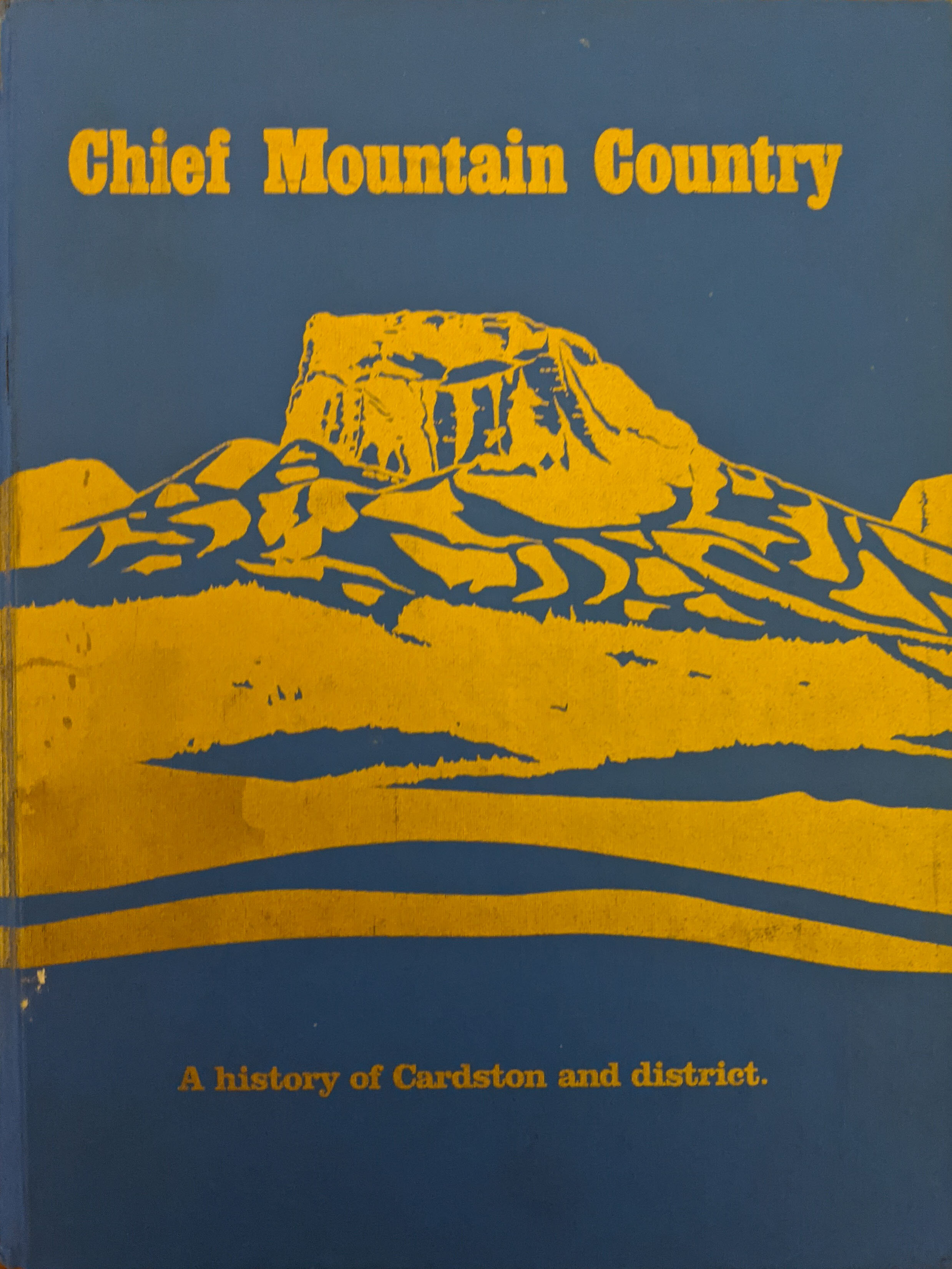 Image 1 of
Image 1 of

Chief Mountain Country, Vol. I: A History of Cardston and District (1978)
By Cardston & District Historical Society
This book is meant to be a general interpretive history of the founding and early development of the town of Cardston, Alberta and the district it serves, and to be a specific history of the people who made it happen. The book arose from a consensus that what we are today was determined by those people who came before, and from our desire to acknowledge and honor their accomplishments. The included histories of our institutions and organizations cover the years to 1950. The inclusion of personal histories was somewhat arbitrary, conditional on the persons being in the town or district and married, or at least important contributors to development by 1925. The Cardston and District Historical Society guided the development and production of this history through an elected executive and appointed committees. The work began in 1976 and concluded in 1978. Some financial assistance was provided by the Town of Cardston, the Province of Alberta and the Dominion of Canada and this assistance is gratefully acknowledged by the Historical Society. The book contains the following chapters: Pioneering, Communication, Culture and Entertainment, Education: Villages and Districts, Government and Politics, Health Care, Industry and Agriculture, Military Service, Public Service, Religion, Sports, Photos of Interest and Family Histories. The last chapter, Family Histories, takes up over 300 pages. There are numerous black and white photos throughout.
By Cardston & District Historical Society
This book is meant to be a general interpretive history of the founding and early development of the town of Cardston, Alberta and the district it serves, and to be a specific history of the people who made it happen. The book arose from a consensus that what we are today was determined by those people who came before, and from our desire to acknowledge and honor their accomplishments. The included histories of our institutions and organizations cover the years to 1950. The inclusion of personal histories was somewhat arbitrary, conditional on the persons being in the town or district and married, or at least important contributors to development by 1925. The Cardston and District Historical Society guided the development and production of this history through an elected executive and appointed committees. The work began in 1976 and concluded in 1978. Some financial assistance was provided by the Town of Cardston, the Province of Alberta and the Dominion of Canada and this assistance is gratefully acknowledged by the Historical Society. The book contains the following chapters: Pioneering, Communication, Culture and Entertainment, Education: Villages and Districts, Government and Politics, Health Care, Industry and Agriculture, Military Service, Public Service, Religion, Sports, Photos of Interest and Family Histories. The last chapter, Family Histories, takes up over 300 pages. There are numerous black and white photos throughout.
By Cardston & District Historical Society
This book is meant to be a general interpretive history of the founding and early development of the town of Cardston, Alberta and the district it serves, and to be a specific history of the people who made it happen. The book arose from a consensus that what we are today was determined by those people who came before, and from our desire to acknowledge and honor their accomplishments. The included histories of our institutions and organizations cover the years to 1950. The inclusion of personal histories was somewhat arbitrary, conditional on the persons being in the town or district and married, or at least important contributors to development by 1925. The Cardston and District Historical Society guided the development and production of this history through an elected executive and appointed committees. The work began in 1976 and concluded in 1978. Some financial assistance was provided by the Town of Cardston, the Province of Alberta and the Dominion of Canada and this assistance is gratefully acknowledged by the Historical Society. The book contains the following chapters: Pioneering, Communication, Culture and Entertainment, Education: Villages and Districts, Government and Politics, Health Care, Industry and Agriculture, Military Service, Public Service, Religion, Sports, Photos of Interest and Family Histories. The last chapter, Family Histories, takes up over 300 pages. There are numerous black and white photos throughout.